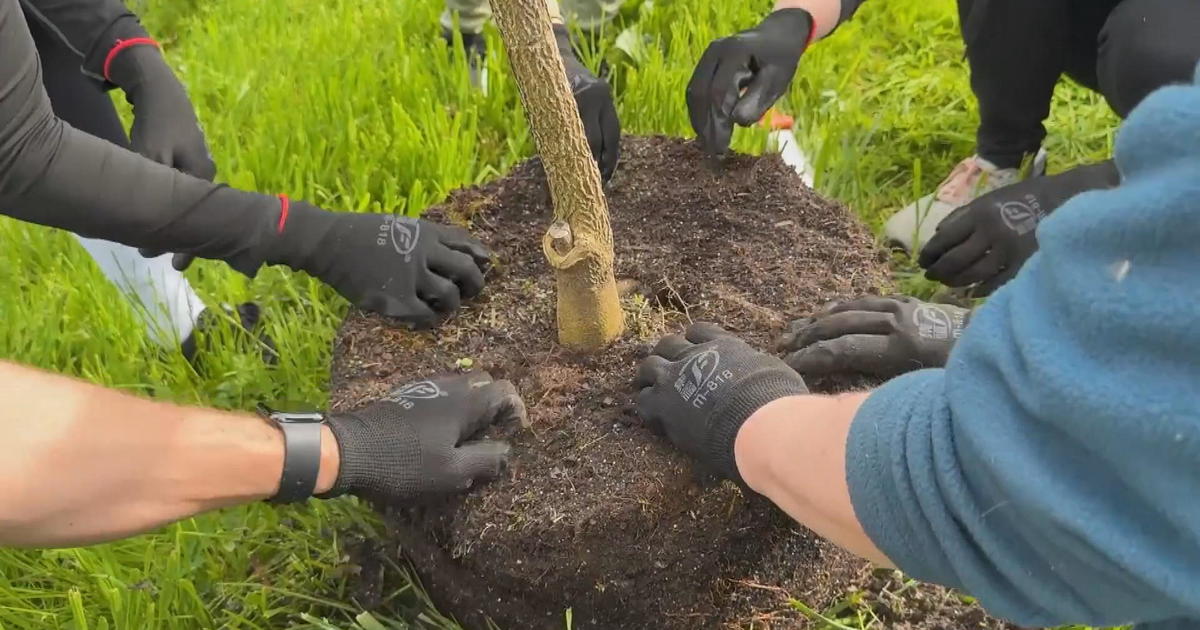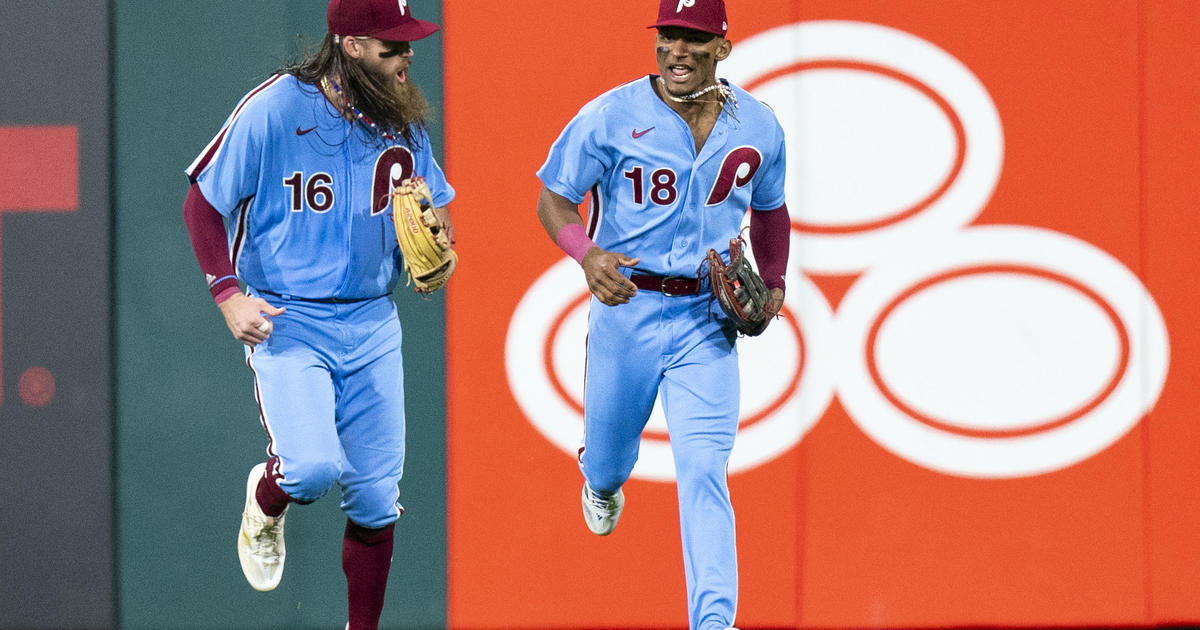Paralympic Wounded Warrior Josh Olson
By Joseph Santoliquito
Columbus, GA (CBS)—Josh Olson thought he just got the wind knocked out of him that October night in the Northern Iraqi city of Tal Afar. It's why he tried getting up and moving toward his unit amid the angry rising sand puffs caused by whizzing bullets and rocket fire.
His quick inventory said all the vital parts were still there—two arms, two hands, a head and two legs. Yet he kept falling. By then, his adrenaline took over as he crawled to his men with ammunition. He wanted to keep them calm. They were the priority, not him.
It wasn't too long after that when Olson discovered a large chunk of his lower right thigh was missing from a rocket blast that hit the wheel well of his vehicle—taking a good piece of him with it. That October 27, 2003 night patrol changed the sergeant's life.
On August 21, Olson, 32, will board a plane with his prosthetic right leg for London, England and the Paralympics, representing the United States as the first active duty combat soldier to ever make U.S. Paralympic shooting team.
Olson, from Spokane, Washington, and stationed in Fort Benning, Georgia, will be competing in the 10-meter air rifle prone and 50-meter smallbore rifle prone events.
Marksmanship is what led Olson to being cleared to re-enlist while he was recovering at the Walter Reed Medical Center in September 2004. Olson's original intention was training soldiers to shoot—not the Paralympics. This new niche in his life was carved through happenstance.
Before all of this occurred, Olson was in limbo. He feared the U.S. Army wouldn't approve his request for continued active due to his lost limb. Shooting was a great, desperate angle to remain. So when Olson was invited to a shooting event at Walter Reed—hitting 49 of the 50 clay projectiles the first time he ever tried—it opened a door.
He was assigned to Fort Benning as a shooting instructor in June 2005 with the U.S. marksmanship unit.
"I was offered an opportunity to try out for the army shooting team and stay on active duty, and I saw this as an opportunity to still serve and train soldiers that are being deployed," Olson said. "I wanted to do something to save someone's life or their buddy's lives. I saw shooting as a way to stay in the army, because I was afraid they weren't going to let me stay.
"That first day I shot at Walter Reed, I happened to have a good day. What was good for me was I did a lot of reactive shooting. Shotgun shooting is reacting to the direction the clay target is going. It's why I picked up on it really fast. But I kind of surprised myself; it was a little surreal. I didn't know whether or not I was shooting these things like this. I even asked someone if they slowed the machines down for me. I thought this was amazing. I was pointing and shooting, and they were blowing up. The guy explained to me everyone was shooting the same thing."
This will be Olson's first Paralympics. He was an alternate on the 2008 team that went to Beijing. Since then, he's made great strides. He's competed all over the world, medaling in four World Cups and finishing among the top eight numerous times.
Shooters are expected to hit 60 targets dead center in 75 minutes. Olson is improving in the 10-meter distance (15-to-17 yards), but is far better at the 50-meter range (66-yards). The target, however, is a circumference of 10.4 millimeters—smaller than a dime. The average human-sized army target is about 22 inches across and 45 inches in length.
In competitive shooting, there's no room for error. Only perfect scores advance. Olson has had three perfect scores in his career. After the initial round thins out the competitors, the top eight advance to shoot 10 more targets and the winners are judged by how many total targets are hit dead center.
"Shooting has taught me patience and drive to look for the door that's opened," Olson said. "It's mostly mental due to the fact you have to stay focused and concentrate on each individual shot. I build breaks into my match plan to get some rest. It's a 60-shot match and you have to be perfect to win."
Olson jokingly says he's half robot now. Although, he didn't fully grasp the enormity of what happened until the day at Walter Reed when the nurses propped him up in front of a mirror for the first time with the prosthetic limb.
"You settle into thinking if this is how it's going to be, this is how it's going to be; everyone has a down day; I had to learn that it's okay to be pissed off and miserable sometimes," Olson said. "The thing that's keeping me going is they told me when I first got here with the shooting program that more wounded soldiers would get the chance I've got. That's what's kept me striving to win."
Like the burning desire to get up that October 27, 2003 night in Tal Afar. Olson and his unit were on night patrol in a soft-skin Humvee that had sand bags on the floor base to protect them from improvised explosive devices (IED). The unit was ambushed, receiving rocket fire that bounced off the back gate of the Humvee.
His unit engaged the enemy disembarking from the vehicle, when a second rocket blast came right where Olson was positioned near a wheel well.
"You never think about yourself in combat," Olson said. "You think about your guys and my job was to direct traffic and finish the enemy by coordinating fire. But each time I tried getting up, I fell back down. I crawled back over and handed out what ammunition I could to my men and tried to keep them calm. That was the best thing for them; tell them where to fire. I had no idea a big chunk of my right leg was gone. My biggest award was I got was all my guys home—that's was the biggest reward any soldier could get."
In the cushy world where U.S. civilians live, what Olson did could be considered brave. But he wanted no medals, because he knew it was typical.
Retired lieutenant colonel Pat Mangin, of Levittown, did two tours in Iraq and passed through Tal Afar.
"It was a pretty nasty city," Mangin recalled. "But all of these men and women that are deployed are special. We had an IED blow up underneath a Stryker and threw this heavy guy clear up into the air. When he landed, it shattered both ankles. He still tried walking, and couldn't. But he had to pull out the driver of the vehicle. So he crawled to him. Taking care of your soldiers is what comes to your mind first. It goes on every day there. Those who think of the vets, that's what's important. Those who know, know."
Olson knows he's headed to London. The shooting events will take place from September 1-4. Olson will be boarding the plane wearing an aluminum bracelet with two names, their ranks and two dates on it. The names are: Corporal Jonathan Blair and specialist Jonathan Barnes.
Blair and Barnes never came home.
Olson frequently looks down on the names on the bracelet when he's having a bad day, when he's not energetic enough to practice. "Those are the times you remind yourself that you're doing it for them," Olson said. "People need to realize what guys go through every day in Iraq and Afghanistan. We need to remember the guys still over there. It's my motivation."



